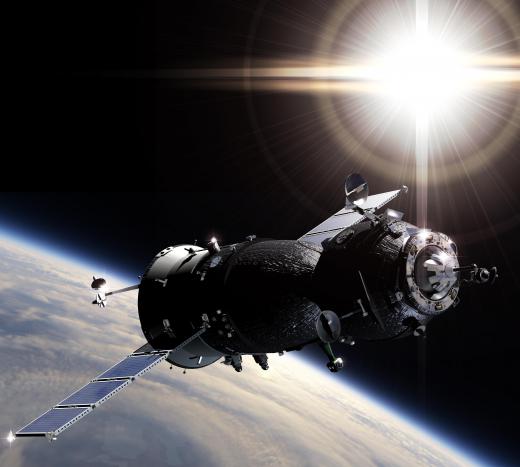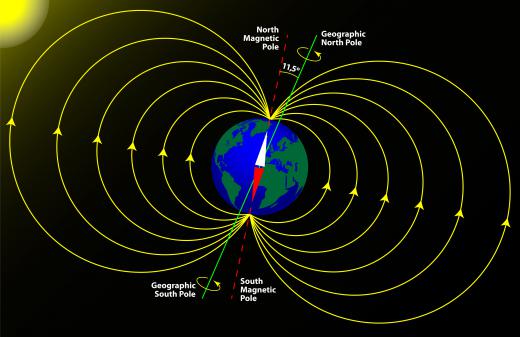What are the Van Allen Belts?
 Michael Anissimov
Michael Anissimov
The Van Allen belts, also referred to as the Van Allen radiation belts, are two large toruses of charged particles around the planet, held in place by the Earth's magnetic field. The Van Allen belts exist because of "blind spots" in the Earth's magnetic field caused by its compression and stretching from solar wind.
The Earth's magnetic field serves as a magnetic mirror, bouncing charged particles back and forth along force lines stretching between the North and South Magnetic Poles. The Van Allen belts are closely associated with the aurora borealis and the aurora australis, beautiful curtains of charged particles visible in locations on the Earth's surface where the Van Allen belts intersect with the upper atmosphere. The Van Allen belts are also relevant to satellites and orbiting space stations, which have to avoid the belts due to the damage that their charged particles would cause.

In the late 19th century and early 20th century, several scientists -- Carl Størmer, Kristian Birkeland, and Nicholas Christofilos -- speculated on the possibility of a belt of charged particles surrounding the Earth, but it wasn't until 1958 when its existence was confirmed by some of the earliest American satellites, Explorer 1 and Explorer 3. The projects were led by Dr. James Van Allen of the University of Iowa, after which the belts were named. Explorer 1, a 14 kg (30 lb) space probe, was launched for the International Geophysical Year, and the scientific data it returned about the space immediately outside of Earth's atmosphere was invaluable. The Van Allen belts were initially discovered when the cosmic ray detection equipment on the satellites went temporarily dead, overwhelmed by the local radiation.

There are two distinct Van Allen belts -- the inner Van Allen belt and the outer Van Allen belt. The inner Van Allen belt, extending from 0.1 to 1.5 Earth radii from the surface, consists of highly charged protons, capable of penetrating up to a millimeter of lead and doing damage to astronauts and space equipment. The outer Van Allen belt, located between 3 and 10 Earth radii from the surface, with its greatest intensity between 4 and 5 Earth radii out, consists of energetic electrons. The source of the energetic particles varies depending on the belt -- the inner Van Allen belts consist of decay products from cosmic ray impacts with the upper atmosphere, while the outer Van Allen belts are produced from influxes of charged particles from geomagnetic storms, which are themselves produced by the influence of the Sun on the Earth's magnetic fields.
AS FEATURED ON:
AS FEATURED ON:














Discussion Comments
There's still some skeptics out there who choose to believe that the moon landing was fake. What a difficult and expensive hoax that would've been! It amazes me that when some people hear the word radiation, the first thing that comes to mind is instant death.
The fact is that the NASA and the Apollo engineers went to great measures and years of experimental processing just to ensure that space travel through the Van Allan belt was possible.
The astronauts weren't exposed to any more radiation than you or I are exposed to when we have a simple x-ray done or from spending an afternoon in the sun.
@ellafarris - The Van Allen belts are doughnut shaped regions that circle the Earth. The inner belt is about three thousand kilometers (1864 miles) above the Earth and is about five thousand kilometers (over 3100 miles) wide.
The outer belt is anywhere from fifteen to twenty thousand kilometers (9320 - 12427 miles) above the Earth with a thickness of six to ten kilometers (3728 - 6213 miles).
Safe flight occurs around four hundred kilometers above the Earth staying well below the Van Allen belts of radiation.
Proper shielding of humans and electronic instruments were developed for successful flight through the radiation belts. Spacecraft navigators also devised a plan to travel through the belts thinnest parts causing them to pass through very quickly in about twenty minutes time.
What is the location of the Van Allen radiation belts and how on Earth did we manage to fly through them to get to the moon?
Post your comments